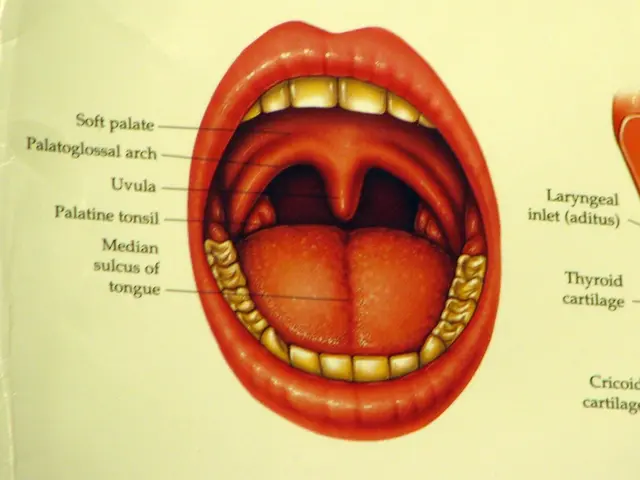Connection between Breast and Ovarian Cancer: Understanding the Linkage and Risk Factors
Breast and ovarian cancer share some notable connections, mostly rooted in genetic factors and lifestyle choices. The relationship between these diseases is quite substantial, especially for individuals with mutations in the BRCA1 and BRCA2 genes.
While breast and ovarian cancer have shared risk factors, it's important to note that BRCA1 and BRCA2 gene mutations stand out as the most significant common risk factors for both cancers. Research suggests that around 65% of families with ovarian and breast cancer have BRCA1 gene mutations, while around 20% have BRCA2 mutations[1].
Other common risk factors for both cancers may include:
- A family history of either cancer
- Older age, with ovarian cancer typically occurring in individuals over 40 years and breast cancer in those ages 55 years or older
- Overweight or obesity
- Having a first child later in life
- Never having children
- Not breastfeeding
- Hormone therapy after menopause
People with a history of either of these cancers are at a heightened risk for developing the other, particularly if they share genetic mutations such as BRCA1 or BRCA2. While we can't change this risk, managing it is crucial[2].
Healthcare professionals may suggest more frequent and thorough screenings to catch any new cancers early. This may include regular mammograms, breast MRI scans, pelvic exams, transvaginal ultrasounds, and CA-125 blood tests. Genetic testing for BRCA1, BRCA2, and other relevant mutations is the best strategy for monitoring and prevention[2].
For those carrying genetic mutations, prophylactic surgeries might be an option. These procedures involve removing organs or tissues to prevent the occurrence or spread of cancer[2].
In terms of modifiable risk factors, achieving and maintaining a moderate weight, regular exercise, reducing alcohol intake, and discussing contraception options with a doctor can help reduce the risk of breast and ovarian cancer.
People with ovarian cancer may have increased risks of Developing other cancers such as bladder cancer, bile duct cancer, colorectal cancer, acute leukemia, or melanoma of the eye[6]. Breast cancer can also metastasize - spread - to the ovaries, although it is relatively uncommon[6].
It's essential to stay vigilant for signs of recurrence or a second cancer after a previous diagnosis of breast or ovarian cancer. Early detection and prompt treatment are vital for improving outcomes[2].
In conclusion, while genetic mutations in BRCA1 and BRCA2 are significant risk factors for both breast and ovarian cancer, other common risk factors also influence these diseases. Understanding these risk factors helps in early detection and prevention strategies.
Sources:[1] Cancer Research UK (2020). Breast cancer: Risk factors.[2] American Cancer Society (2021). What are the risk factors for breast cancer?[3] Cancer.gov (2021). Breast Cancer Risk Factors.[4] Cancer.gov (2020). Ovarian Cancer Risk Factors.[5] Mayo Clinic (2018). Breast cancer prevention: Can you reduce your risk?[6] Mayo Clinic (2021). Ovarian cancer: Diagnosis & Staging.
- Genetic mutations in the BRCA1 and BRCA2 genes are the most significant common risk factors for both ovarian and breast cancer.
- Research indicates that around 65% of families with ovarian and breast cancer have BRCA1 gene mutations, while around 20% have BRCA2 mutations.
- A family history of either breast or ovarian cancer is another common risk factor for both diseases.
- Older age, overweight or obesity, having a first child later in life, never having children, not breastfeeding, and hormone therapy after menopause are additional common risk factors for both breast and ovarian cancers.
- People with a history of either breast or ovarian cancer are at a heightened risk for developing the other, especially when they share genetic mutations such as BRCA1 or BRCA2.
- Healthcare professionals may recommend more frequent and thorough screenings to catch new cancers early, such as regular mammograms, breast MRI scans, pelvic exams, transvaginal ultrasounds, and CA-125 blood tests.
- For individuals carrying genetic mutations, prophylactic surgeries might be an option to remove organs or tissues to prevent the occurrence or spread of cancer.
- People with ovarian cancer may have increased risks of other cancers like bladder cancer, bile duct cancer, colorectal cancer, acute leukemia, or melanoma of the eye, as well as breast cancer that can metastasize (spread) to the ovaries.








